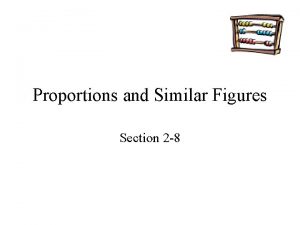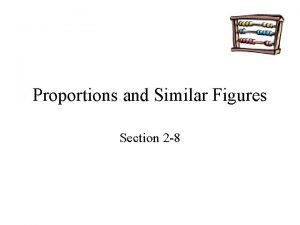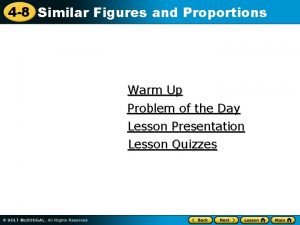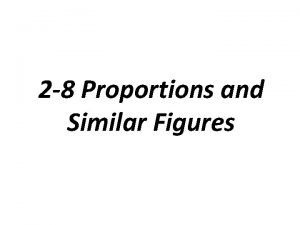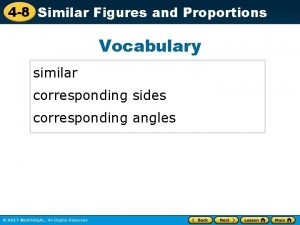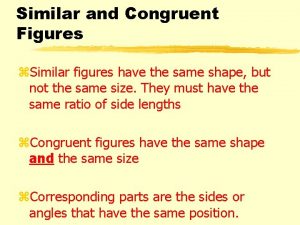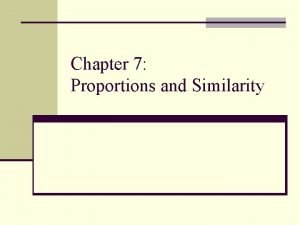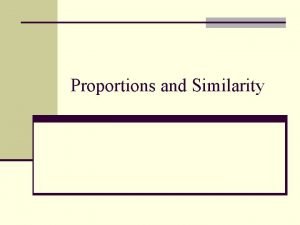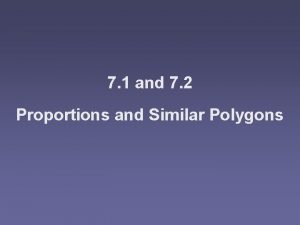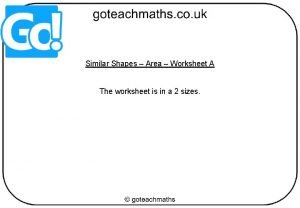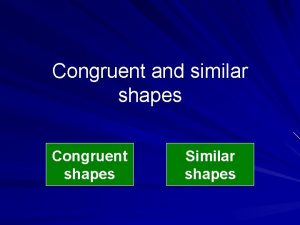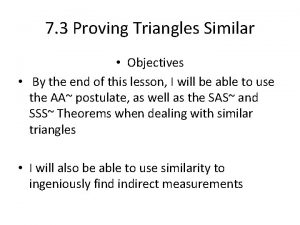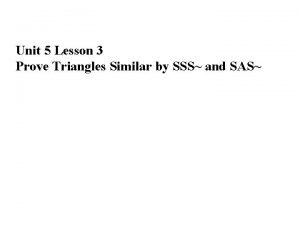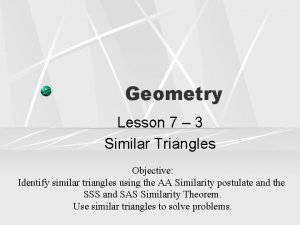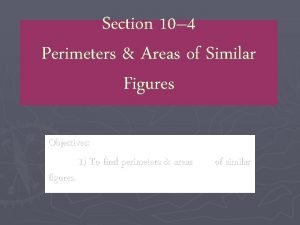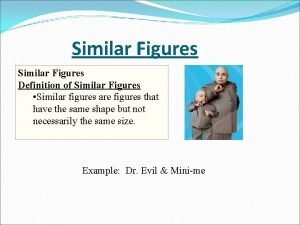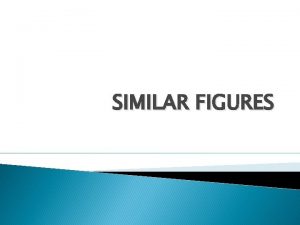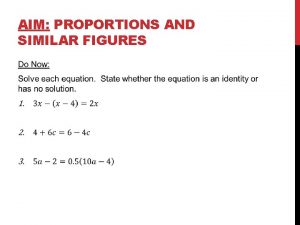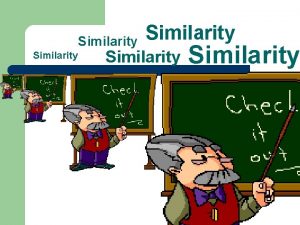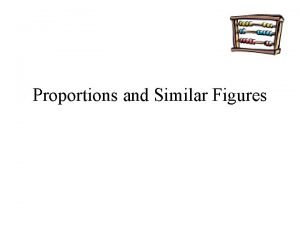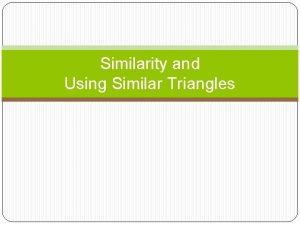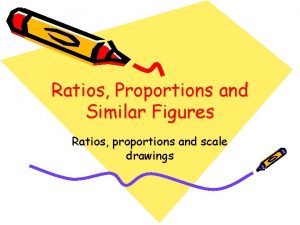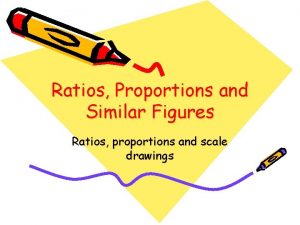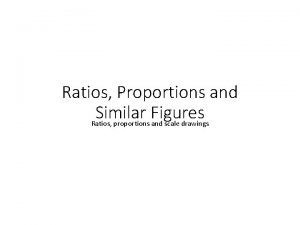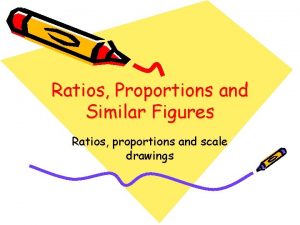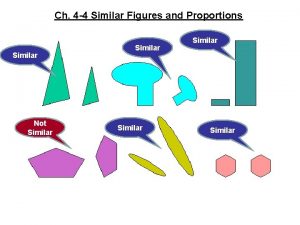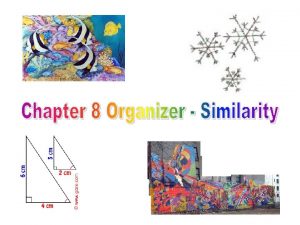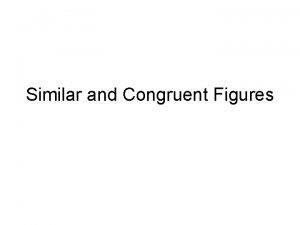Proportions and Similar Figures What is Similarity Similar


















- Slides: 18

Proportions and Similar Figures

What is Similarity? Similar Triangles Not Similar Not Similar

Similar Figures that have the same shape but not necessarily the same size are similar figures But what does “same shape mean”? Are the two heads similar? N O T Si m ila r How does this differ from congruence?

Similar Figures Similar figures can be thought of as enlargements or reductions with no irregular distortions. – So two figures are similar if one can be enlarged or reduced so that it is congruent (means the figures have the same dimensions and shape, symbol ≅) to the original.

Similar Triangles • When triangles have the same shape but may be different in size, they are called similar triangles. • We express similarity using the symbol, ~. (i. e. ΔABC ~ ΔPRS)

Example - Similar Triangles Figures that are similar (~) have the same shape but not necessarily the same size.

Similar Figures When stating that two figures are similar, use the symbol ~. For the triangles above, you can write ∆ABC ~ ∆DEF. Make sure corresponding vertices are in the same order. It would be incorrect to write ∆ABC ~ ∆EFD. You can use proportions to find missing lengths in similar figures.

Example 1 • If ΔABC ~ ΔRST, list all pairs of congruent angles and write a proportion that relates the corresponding sides.

Example 1 • Use the similarity statement. ΔABC ~ RST Answer: Congruent Angles: A R, B S, C T

Example: Continued

Your Turn: In the figure, the two triangles are similar. What is the length of c? A 5 P 10 c B R 4 d Q 6 C

Your Turn: In the figure, the two triangles are similar. What is the length of d? A 5 P 10 c B R 4 d Q 6 C

Similarity is used to answer real life questions. • Suppose that you wanted to find the height of this tree. • Unfortunately all that you have is a tape measure, and you are too short to reach the top of the tree.

You can measure the length of the tree’s shadow. 10 feet

Then, measure the length of your shadow. 10 feet 2 feet

If you know how tall you are, then you can determine how tall the tree is. 6 ft 10 feet 2 feet

The tree is 30 ft tall. Boy, that’s a tall tree! 6 ft 10 feet 2 feet

Your Turn: When a 6 -ft student casts a 17 -ft shadow, a tree casts a shadow that is 102 ft long. Find the height of the tree. h 6 17 102
 Similar figures / proportion (level 1)
Similar figures / proportion (level 1) 2-8 proportions and similar figures
2-8 proportions and similar figures Similar shapes and proportions
Similar shapes and proportions 2-8 proportions and similar figures
2-8 proportions and similar figures Similar figure proportions
Similar figure proportions All similar figures are congruent
All similar figures are congruent Means and extremes examples
Means and extremes examples Proportions and similarity
Proportions and similarity Geometry chapter 7 proportions and similarity answers
Geometry chapter 7 proportions and similarity answers Similar shapes and proportions lesson 4-1
Similar shapes and proportions lesson 4-1 Similar shapes area and volume worksheet with answers
Similar shapes area and volume worksheet with answers Similar shapes and proportions lesson 4-1
Similar shapes and proportions lesson 4-1 Triangle proportionality theorem in real life
Triangle proportionality theorem in real life 7-3 practice proving triangles similar
7-3 practice proving triangles similar A polygon with eight sides and eight angles
A polygon with eight sides and eight angles Solid and plane figures
Solid and plane figures Unit 2 lesson 3 proving triangles similar
Unit 2 lesson 3 proving triangles similar 7-3 similar triangles
7-3 similar triangles Similar figures
Similar figures
